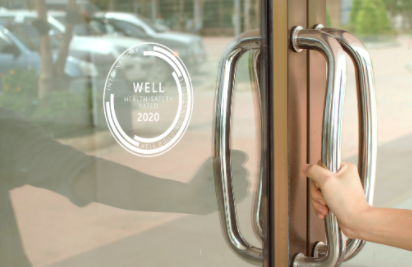Why health and wellness will dictate real-estate planning post pandemic
The threat of climate change has catapulted green building into an $81 billion market in the United States. The coronavirus pandemic may serve as a similar catalyst for health-and-wellness building.
Speaking to Yahoo Finance at the All Markets Summit: Road to Recovery, Paul Scialla, founder of the International WELL Building Institute (IWBI) and real estate firm Delos, said concerns about air and water quality, as well as emergency preparedness planning are increasingly dictating real estate development around the world as companies look to reopen safely in the absence of a COVID-19 vaccine.
“I would say maybe 1 out of 100 people a year ago in the developed world probably had an opinion or concern or even a thought about something like indoor air quality. Now that number is 99 out of 100,” Scialla said. “If [the crisis] is going to lead to more corrective action and better, healthier spaces in the long run, then that’s a positive outcome.”
Scialla is embracing the shift, now six years after he launched IWBI to focus on what he describes as a “merger between health sciences and the building sciences,” studying the connection between indoor factors like air and water quality or acoustics to a person’s respiratory, cardiovascular, or immune functions. The institute established certification for healthy buildings in more than 5 dozen countries before the pandemic hit.
“The E in ES&G has been largely defined as it comes to our buildings for years, with the environmental elements to a building,” Scialla said, referring to “environmental, social, and governance” as guiding principles for sustainable investing. “The S has been largely missing. That social components of how a real estate portfolio, how an office ... how that real estate itself can contribute to societal benefit. So, we've seen a massive jump in interest, not only on the investment side, but also the user side.”
The growth has come with the launch of IWBI’s WELL Health Safety rating earlier this year. The rating certifies structures based on five different criteria: cleaning and sanitation procedures, emergency preparedness programs, health service resources, air and water quality management, and stakeholder engagement and communication.
New and existing buildings are subject to a third party document review and performance verification to ensure the structures are within IWBI’s global standards. Those that pass the test, receive a health safety seal equipped with a QR code, so guests or visitors can scan the code to see the changes the building has undergone to address health and safety concerns, before they enter.
At least 1,400 mayors have signed onto the standards, so far. Yankee Stadium, the Empire State Building, and Royal Albert Hall have joined a growing list of buildings displaying the WELL seal.

“The seal itself is a symbol of confidence,” Scialla said. “This process is putting [together] science, structure, form, validity, and most importantly third party verification, so that employees know that their company has done something.”
Scialla compares the current growth in healthy buildings to the early days of the green building movement and the global push to reduce energy costs and greenhouse gas emissions. More than two decades after the U.S. Green Building Council established standards for “Leadership in Energy and Environmental Design,” or LEED certification, green buildings account for nearly a quarter of all commercial office space, according to data from Statista. There are more than 96,000 LEED projects in 167 countries.
While some performance metrics for LEED certification overlap with WELL, Scialla says the economic case for a healthy structure is stronger, given that it addresses the issue of productivity and human wellness from a more holistic standpoint. He argues his movement promotes better outcomes for 90% of a building’s input, including salaries, wages, health-care costs, and productivity.
With the number of coronavirus cases surging across the U.S. and other parts of the world, Scialla admits the WELL standards alone won’t be enough to bring business activity back to pre-pandemic levels in the short term. Still, he’s optimistic that the pandemic has shifted the development priorities in his favor.
“I think the pendulum swings in the extremes. When this first started, there was a lot of talk, well, no one's ever going back to an office again. And you're starting to see that start to shift as well,” Scialla said. “This is not just about today. If one good thing can come out of this, it's a renewed or re-upped ante and focus on health and well-being and health safety in buildings.”
More from All Markets Summit:
Bill Gates on COVID-19: 'Fall 2021 won't be completely back to normal'
Bill Gates slams Trump's COVID-19 adviser as 'pseudo-expert' who's 'off-the-rails'
Land O’ Lakes CEO: We must invest in rural communities 'to make sure we have a vibrant America'
Electronic voting will become 'fraud proof' and it will prompt more people to vote: Adobe CEO
Akiko Fujita is an anchor and reporter for Yahoo Finance. Follow her on Twitter @AkikoFujita



